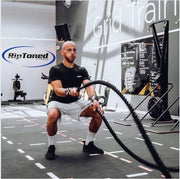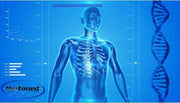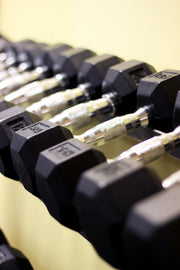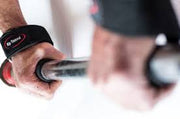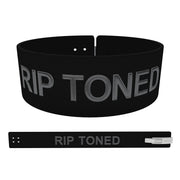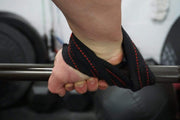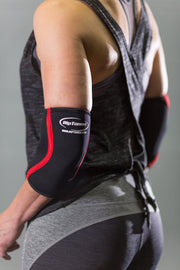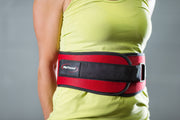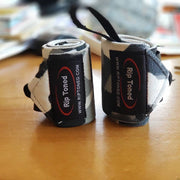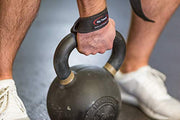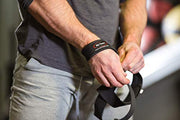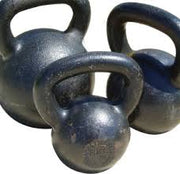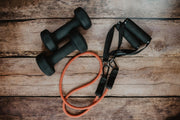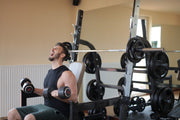Monitoring vital signs is an essential aspect of managing one's health. It involves keeping track of various physiological parameters, such as heart rate, blood pressure, respiratory rate, and body temperature. Among these vital signs, resting heart rate (RHR) holds a significant place due to its crucial role in maintaining cardiovascular health.
RHR is the number of times the heart beats per minute when the body is at rest. It reflects the efficiency of the heart in pumping oxygen-rich blood to different organs and tissues. In this markdown, we will delve into the importance of monitoring RHR, how it can be tracked and interpreted, and its implications for overall health and well-being.
Importance of Resting Heart Rate
Monitoring resting heart rate is vital as it serves as an indicator of one's overall cardiovascular health. A normal RHR can range from 60-100 beats per minute, but a lower RHR usually indicates better cardiovascular fitness. A higher RHR, on the other hand, can be a sign of various underlying health issues, such as hypertension, thyroid problems, or even stress and anxiety.
Tracking RHR regularly, individuals can identify any changes or abnormalities that may require medical attention. A consistently elevated RHR can be a sign of an underlying heart condition, while a sudden drop in RHR may indicate dehydration or severe illness. Moreover, studies have shown that maintaining a lower resting heart rate through regular exercise can significantly reduce the risk of cardiovascular diseases, including heart attack and stroke.
How to Track Resting Heart Rate
Resting heart rate can be easily tracked by checking one's pulse at the wrist or neck for a minute. However, with advancements in technology, various devices, such as fitness trackers and smartwatches, now offer the convenience of continuous RHR monitoring. These devices use sensors to measure heart rate through optical sensors that detect blood flow.
Moreover, several mobile applications are also available that use the camera on a smartphone to measure RHR by tracking changes in skin color caused by blood flow. These applications provide an easy and accessible way of monitoring RHR without any additional devices.
Plus, during physical activities like running or cycling, sports watches with built-in heart rate monitors can track RHR in real time. It allows individuals to monitor their heart rate during exercise and adjust their intensity levels accordingly.
With the rise of body temperature in telemedicine and virtual healthcare services, individuals can now track their RHR remotely through wearable devices and share this data with their healthcare providers for better monitoring and management.
How to Improve Resting Heart Rate
A healthy lifestyle plays a crucial role in maintaining an optimal resting heart rate. Regular exercise, along with a balanced diet, can help improve cardiovascular fitness and lower RHR. Incorporating aerobic exercises such as running, cycling, or swimming into one's weekly routine can significantly impact RHR.
Moreover, managing stress levels through relaxation techniques like yoga and meditation can also contribute to lowering RHR. Additionally, avoiding excessive consumption of alcohol smoking, and maintaining a healthy weight can have a positive impact on resting heart rate.
It is essential to note that sudden changes in RHR should not be ignored and may require consultation with a healthcare professional. By monitoring resting heart rate regularly and making necessary lifestyle changes, individuals can improve their cardiovascular health and overall well-being.
Easy, low-cost methods for resting heart rate tracking
Tracking resting heart rate doesn't have to be expensive or cumbersome. There are several low-cost methods that individuals can use to monitor their RHR conveniently.
One of the most accessible and cost-effective ways is manually checking one's pulse. This method requires no additional equipment, and all it takes is a minute. By placing two fingers on the wrist or neck, individuals can easily feel their pulse and count the number of beats in a minute.
Another low-cost method is a mobile application that measures RHR through a smartphone camera. These applications are usually free or available at a minimal cost, making them an affordable option for tracking RHR.
For those who prefer continuous monitoring without relying on a smartwatch or fitness tracker, chest straps with heart rate sensors are also available at a relatively low cost. These straps can be connected to a smartphone or fitness watch and provide real-time tracking of RHR during physical activities.
Moreover, individuals on a budget can also opt for simple fitness trackers that measure RHR, along with other basic features like step count and distance covered. These devices offer convenient and affordable ways to monitor RHR without investing in high-end and expensive gadgets.
In addition, individuals can also consider using a blood pressure monitor with an integrated heart rate sensor. These devices are available at pharmacies or online stores and provide accurate measurements of both blood pressure and resting heart rate.
Can Resting Heart Rate Tracking Be Misleading?
While RHR tracking can provide valuable insights into one's cardiovascular health, it is essential to understand that certain factors may skew the results. For instance, caffeine intake, certain medications, and hormonal changes during pregnancy can temporarily elevate resting heart rate.
Similarly, engaging in physical activity or being exposed to extreme temperatures can also affect RHR readings. Therefore, it is crucial to track RHR consistently under similar conditions, such as waking up in the morning or before going to bed at night.
Moreover, it is essential to understand that while a lower RHR usually indicates better cardiovascular fitness, some individuals may naturally have a higher resting heart rate due to genetic factors. In such cases, focusing on overall cardiovascular health instead of solely relying on RHR readings is more beneficial.
Plus, it is essential to remember that RHR tracking should not replace regular medical check-ups and consultations with healthcare professionals. Instead, it should be used as an additional tool for monitoring one's health and making necessary lifestyle changes for a healthier life.
Can Resting Heart Rate Tracking Help in Early Detection of Health Issues?
Regularly monitoring RHR can provide individuals with an early warning sign for various health issues. A consistently elevated resting heart rate, even during periods of rest or sleep, may indicate underlying health conditions such as hypertension, thyroid disorders, or metabolic syndrome.
Moreover, sudden fluctuations in RHR can also be a sign of dehydration or severe illness. By tracking RHR regularly, individuals can identify any changes or abnormalities that may require medical attention and seek appropriate treatment.
Furthermore, several studies have shown a correlation between resting heart rate and the risk of cardiovascular diseases, including heart attack and stroke. A consistently high RHR has been linked to an increased risk of these conditions, highlighting the importance of monitoring RHR for early detection and prevention.
In addition to cardiovascular health, tracking RHR can provide insights into one's overall physical and mental well-being. High levels of stress or anxiety can cause an increase in resting heart rate, and by identifying these changes, individuals can take necessary steps to manage their stress levels and improve their emotional well-being.
With the advancement of technology and remote healthcare services, tracking RHR has become more accessible and convenient for individuals to monitor their health and detect any potential issues at an early stage. Therefore, regular RHR tracking can play a vital role in promoting overall health and well-being.
Benefits of Monitoring Resting Heart Rate
Regular monitoring of resting heart rate can have numerous benefits for individuals, including better management of cardiovascular health and early detection of potential health issues. By tracking RHR, individuals can also monitor the effectiveness of their lifestyle changes and see the impact on their cardiovascular fitness.
Moreover, RHR tracking can help individuals make informed decisions about their physical activity levels. By knowing their resting heart rate, individuals can adjust the intensity of their exercises to ensure they are not exerting themselves too much and risking injury.
Additionally, RHR tracking can help identify any underlying health conditions that may require medical attention. By detecting changes or abnormalities in RHR, individuals can seek appropriate treatment and prevent potential health issues from becoming more severe.
Furthermore, resting heart rate is an excellent indicator of overall health and well-being. By monitoring RHR regularly, individuals can identify patterns or trends that may require attention, such as consistently high RHR indicating chronic stress or anxiety.
Moreover, tracking RHR has become more accessible and convenient with wearable devices and mobile apps. Individuals can now monitor their RHR at any time and place, making it an essential tool for promoting self-care and taking charge of one's health.
Why Resting Heart Rate Tracking Should Be an Essential Part of One's Health Routine?
Resting heart rate tracking should be an essential part of one's health routine because it provides valuable insights into overall cardiovascular health and can help individuals make informed decisions about their well-being.
By monitoring RHR regularly, individuals can identify any potential issues at an early stage, preventing them from developing into more severe health conditions. RHR tracking can also aid in managing chronic health conditions such as hypertension or thyroid disorders by providing individuals with early warning signs of changes in their health.
Moreover, regularly tracking resting heart rate can help individuals make necessary lifestyle changes to improve their cardiovascular fitness and overall well-being. By identifying patterns and trends in RHR readings, individuals can make informed decisions about their exercise routine, diet, and stress management techniques.
Furthermore, RHR tracking can be an essential tool for managing emotional well-being. By monitoring changes in RHR, individuals can identify any triggers or patterns related to stress and anxiety levels and take necessary steps to improve their mental health.
Additionally, with the growing availability of wearable devices and mobile apps that track RHR, monitoring one's resting heart rate has become more convenient and accessible. Therefore, incorporating RHR tracking into one's health routine can promote self-care and empower individuals to take control of their health.
Tips for Effective Resting Heart Rate Tracking
To ensure accurate and effective resting heart rate tracking, individuals should follow these tips:
- Choose a consistent time of day to measure body temperature and heart rate, preferably first thing in the morning after waking up. This will provide consistent readings for comparison.
- Take measurements in a relaxed state while sitting or lying down, and avoid measuring immediately after physical activity or consuming caffeine.
- Use an appropriate device, such as a chest strap heart rate monitor or a wearable fitness tracker with built-in heart rate monitoring capabilities.
- Track RHR regularly, at least a few times a week, to identify patterns and changes over time.
- Stay hydrated, as dehydration can cause an increase in resting heart rate.
- Monitor RHR after illness or stressful events, as these can also impact RHR readings.
- Consult with a healthcare professional for any significant changes or abnormalities in RHR readings.
By following these tips, individuals can ensure accurate and consistent RHR tracking, providing valuable insights into their overall health. Listen to your body and make necessary lifestyle changes for a healthier heart rate.
FAQs
Why is it important to track resting heart rate alongside normal body temperature and blood pressure readings?
Tracking your resting heart rate, along with normal body temperature and blood pressure readings, offers a comprehensive view of your overall health. These vital signs are crucial indicators of how well your body is functioning. For instance, a normal resting heart rate combined with normal blood pressure and body temperature can suggest good cardiovascular health and efficient bodily functions.
How can measuring blood pressure at home help in managing high blood pressure?
Measuring blood pressure at home allows for multiple measurements over time, which can provide a more accurate picture of your blood pressure levels than a single reading at a doctor's office. Regular monitoring can help in the early detection of high blood pressure (hypertension), enabling timely adjustments in lifestyle or blood pressure medication under the guidance of medical professionals.
What is the significance of systolic and diastolic pressure in blood pressure readings?
Systolic pressure, the higher number in a blood pressure reading, measures the force your heart exerts on the walls of your arteries each time it beats. Diastolic pressure, the lower number, measures the force your heart exerts on the walls of your arteries in between beats. Together, these readings help assess your risk of cardiovascular diseases. Normal blood pressure monitoring is generally around 120/80 mmHg.
How can I ensure I'm using my wrist blood pressure device correctly to get accurate readings?
To ensure accurate readings from wrist blood pressure devices, make sure your arm and wrist are at heart level during the measurement. Follow the manufacturer's instructions carefully, including proper placement of the cuff. It's also recommended to take multiple measurements at different times of the day and consult with medical professionals to verify the accuracy of your device.
Conclusion
Resting heart rate tracking is a simple and effective way to monitor one's cardiovascular health and overall well-being. By regularly measuring RHR and following the tips mentioned above, individuals can take charge of their health and make informed lifestyle choices. With advancements in technology, RHR tracking has become more accessible and convenient, making it an essential tool for promoting self-care and improving overall health and well-being.
Additionally, individuals should consult with a healthcare professional for any significant changes or abnormalities in RHR readings to ensure early detection and prevention of potential health issues. Remember, taking care of your heart rate is taking care of your overall health. So make RHR tracking a part of your daily routine and prioritize your well-being.

You May Also Be Interested In:




